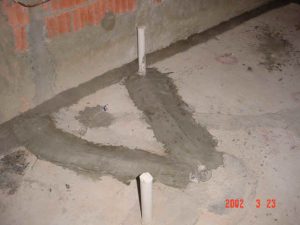Screed
Defect and Repair
Generally, defects in screed can be the result of improper mixes (e.g.: use sand which is too fine, or too high water: cement ratio), insufficient curing, and to rapid drying (e.g. due to the hot weather).
However, as shown in the table below, the types of screed common defects and the causes.
| Defects | Repair |
| Curling
This defect is due to the drying shrinkage. Since the upper surface loses moisture more rapidly than the lower ones, the upper surface will shrink first. The result is the tendency for the screed to curl upwards at the edges of bays, resisted by the degree of bonding to the subsurface and by the total thickness of the screed. Thus, bonded screeds have fewer tendencies to curl than unbonded screeds. Also, thick unbonded screeds tend to curl less than thinner ones as screeds with greater thickness have more strength to resist curling forces. |
Hack-off the affected area and use bonding agent and polymer repair mortar to repair. |
| Crack
1. Caused by impact load.This is due to the wrong composition of the mixes, which have been too dry to permit adequate compaction. 2. Where services are laid within the thickness of the screed. Pipes should be laid at sufficient depth below the screed surface.
|
For small or hair-line crack, low viscosity material e.g. PU or Epoxy Resin can be used for grouting, whilst for big cracks, non-shrinkage grout is the choice. |
| Break
This might happen over large areas, due to cement content deficient in screed. |
Relaid the screed |
Note: For usage in the area prone to water, the screed should be laid to slope to provide adequate drainage, safety and convenience.
For more defects, please refer to the Defect Library.
